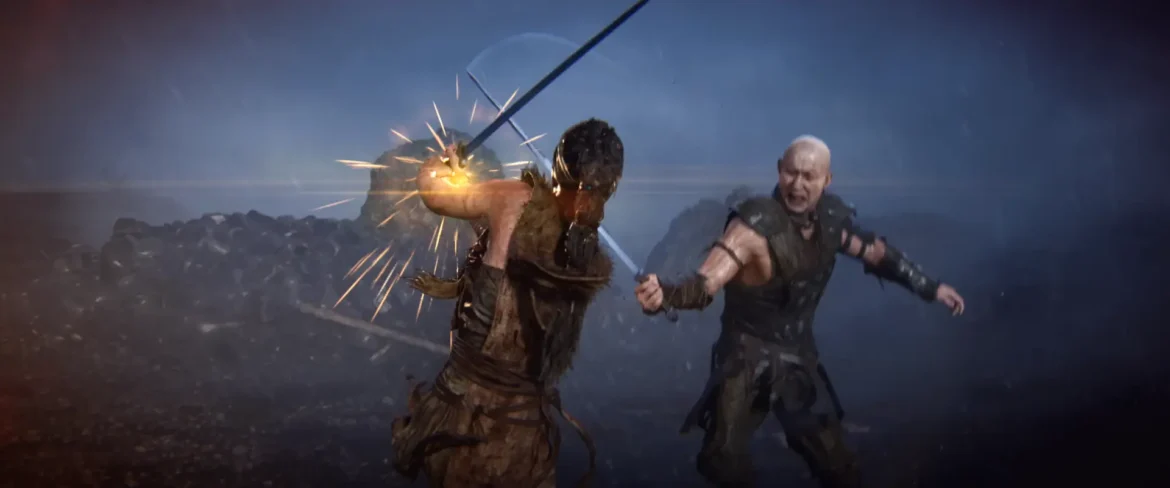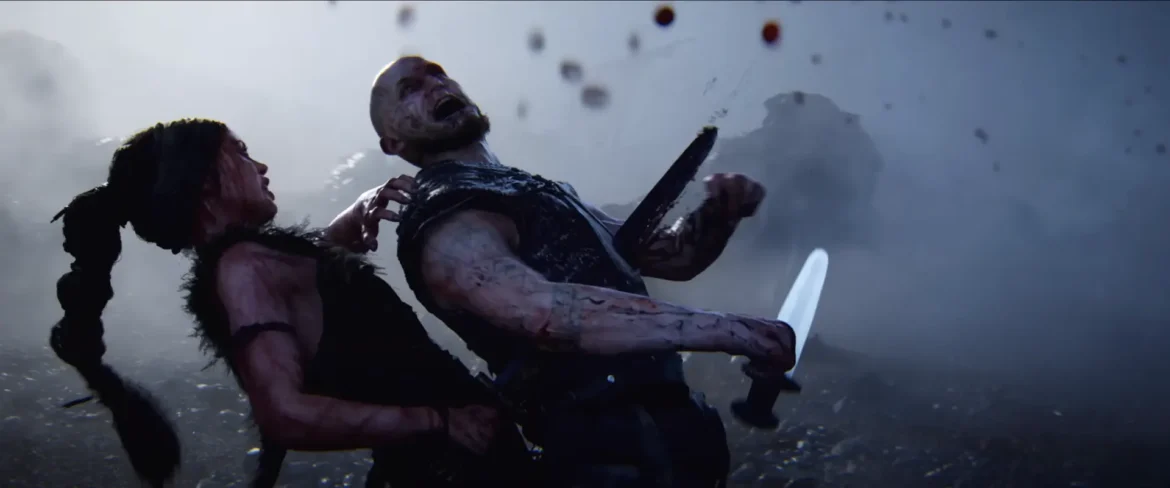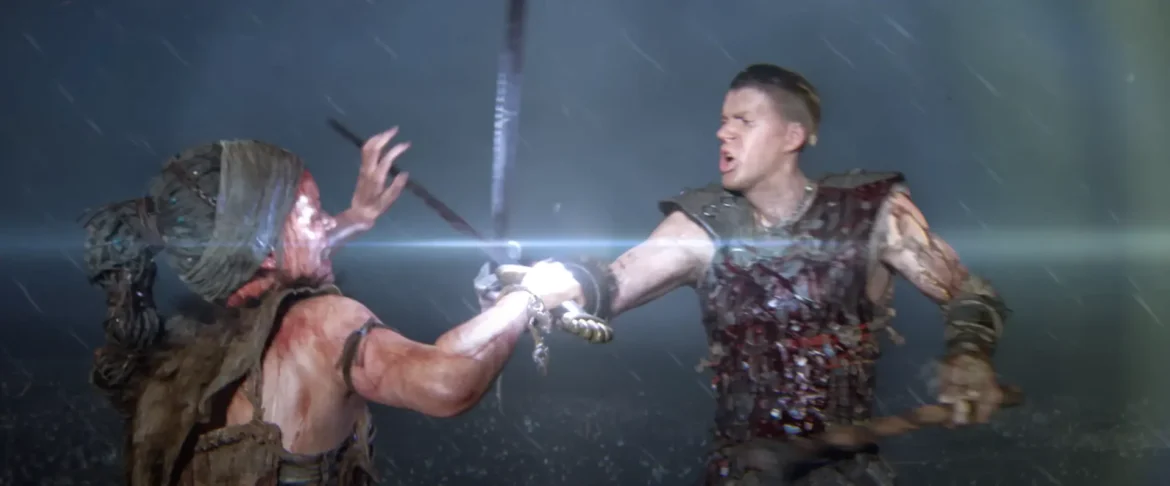Release Date : May 21, 2024
Developer(s) : Ninja Theory
Publisher(s) : Xbox Game Studios
Platforms : Xbox Series X/S, PC
Hellblade II was the first game announced for Xbox Series X, and instantly represented the “next-gen” promise. Revealed with a stunning trailer provoking massive praise at The Game Awards 2019, Senua’s Saga: Hellblade II is bound to impress, or risk disappointing its fanbase and turning everything upside down. Fortunately for Ninja Theory and Microsoft, Senua is a skilled warrior who has mastered her job: she leaves you breathless.
Table of Contents
A Cinematic Dream
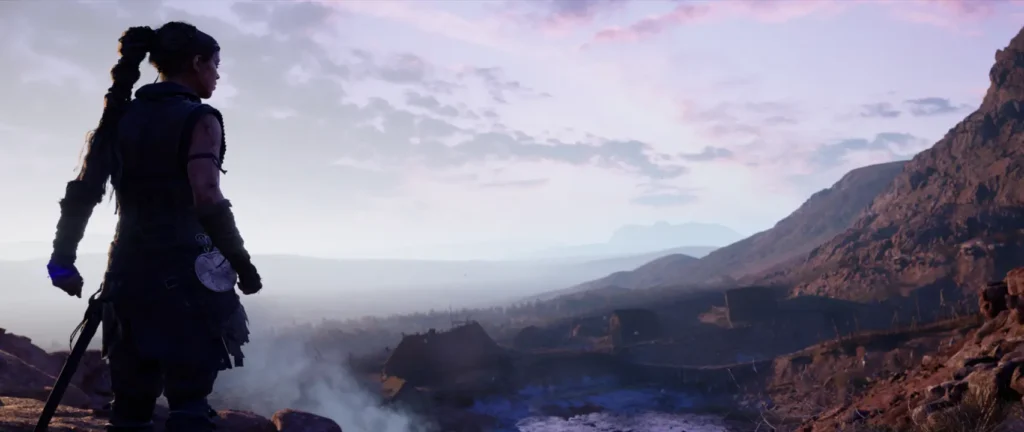
Forget everything used to represent the peak of realism and animation in video games. The Last of Us Part 2, Gears V, Horizon Forbidden West, Alan Wake 2, Demon’s Souls… they’re all about to experience a new visual benchmark from this day forward, all blown away by Senua’s powerful technical blow.
We’re starting our Hellblade II review directly with the graphics, because they’re so stunning that we couldn’t do otherwise. They crush everything we’ve seen before, to the point where we can’t tell what’s actually playable and what’s not. On several occasions, we thought that some sequences were just CGI cinematics, only to realize that we had to push the joystick to move forward. Not to mention the soundtrack, everything is extremely detailed, the music is excellent, and the mind voices have a real impact.
Exhilaration is mechanically created through a new level of facial expressions never seen before in the world of video games. Using Epic Games’ MetaHuman technology combined with state-of-the-art performance capture, Senua’s Saga: Hellblade II renders the smallest details of the actors’ faces on screen. Glances are full of life, emotions are faithfully transcribed, and we never feel the uncanny valley suffered by too many productions insisting on realism. Hair movements, clothing folds, muscle contractions… everything is handled with incredible precision. Just activate the photo mode during a fight to admire Ninja Theory’s outstanding work. All this is complemented by credible acting and top-notch voiceover.
Lights, Camera, Action!
No need to wait for an update, Hellblade II’s photo mode is immediately available. Complete and user-friendly, it allows you to easily manage lighting sources, depth of field, and what should be visible and what should not. A great job.

The scenery is equally impressive, despite being a little static. This reflects the constant sense of desolation emerging from the game, where the breathtaking visuals seem almost apologizing for being pleasing to the eye. In this 10th-century Iceland sculpted by ice and fire, with locations recreated using photogrammetry and refined with Unreal Engine 5, there are plenty of details and special effects. The only thing we’d have liked to see a little more detailed is the water’s reflections.
This technical display is not spoiled by any on-screen interface elements, as the player progresses without any icons showing him that he can make an interaction. Ninja Theory has gone to great lengths to offer the kind of cinematic adventure that Xbox owners have always dreamed of, even if it means choosing a 2.39:1 aspect ratio that can’t be disabled, adding black bars to a 16:9 screen. A decision that will certainly provoke some controversy.
A Straight Path to Madness

Hellblade II’s visual realism is insane. And that’s perfect, since the adventure is – once again – all about madness! After defying the gods to save Dillion’s soul, Senua decides to help the victims of tyranny by freeing the oppressed from their captors. The problem is, in her head, she’s not alone. Senua suffers from psychosis: she sees and hears things that others cannot.
In this dark adventure, where death lurks everywhere, Senua’s mind is not alone. It’s only natural, then, that the majority of puzzles are based on the observation of elements, from glyphs to be found in the scenery by finding the right angle (as in the first game), to stone orbs capable of altering the environment in real-time.
Even the environments bear the scars of the heroine’s characteristics. It’s quite common to wander through caves with a confusing kaleidoscopic effect, or simply to be “teleported” into a nightmare arena in the blink of an eye. Hellblade II covers several themes, from the elder’s responsibility for the traumas of the younger generation, to the insane desire of humans to control their own kind. Both intimate and outrageous, evoking the smallest element to make us fear the biggest, Senua’s Saga is ambitious in its purpose and in the way it approaches it. Drawing on the work of Cambridge University and the experience of people suffering from psychosis, Senua’s Saga is not for everyone. It doesn’t rely on any narrative props to facilitate recognition, apart from Senua’s tears perhaps. Even when the element of surprise is gone, the plot is still engaging enough to make us want to see more.
Insights and Recap
In the “Bonus” section, the game provides two videos already surfing the web. The first is a short report on how Ninja Theory handled the psychosis, and the second is a recap of the first episode’s events.
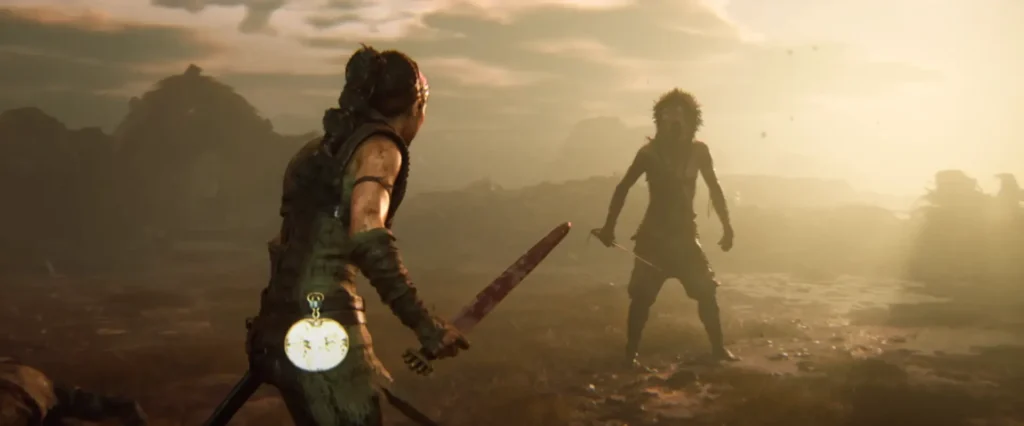
Unlike what some players might expect, especially since Satya Nadella’s company is funding the project, Hellblade II is strictly narrative and linear, with corridors, battles, puzzles, and cutscenes. It maintains the formula of its predecessor, evolving only on certain points (we’ll come back to this later), and should never be compared to God of War: Ragnarok, for example, which is a more generous action-adventure game in terms of gameplay.
Senua has no grappling hook, no bow, and no magic powers. She doesn’t leap, doesn’t have to go back and forth, and doesn’t meet any protagonists offering to improve her sword’s stats. There are no side-quests in this 8-hour journey. There are some secret passages to collect a few collectibles, but Ninja Theory’s work is presented as a straight line, giving the impression of a large interactive cinematic scene.
Unfortunately, this impression is supported by some striking sequences where the gameplay remains limited, such as the famous giant scene revealed at the Game Awards 2021. This is surely the cost of delivering the most visually stunning narrative experience ever, mastered from A to Z, produced by a humble studio with a curious story to tell.
Steel and Knuckles
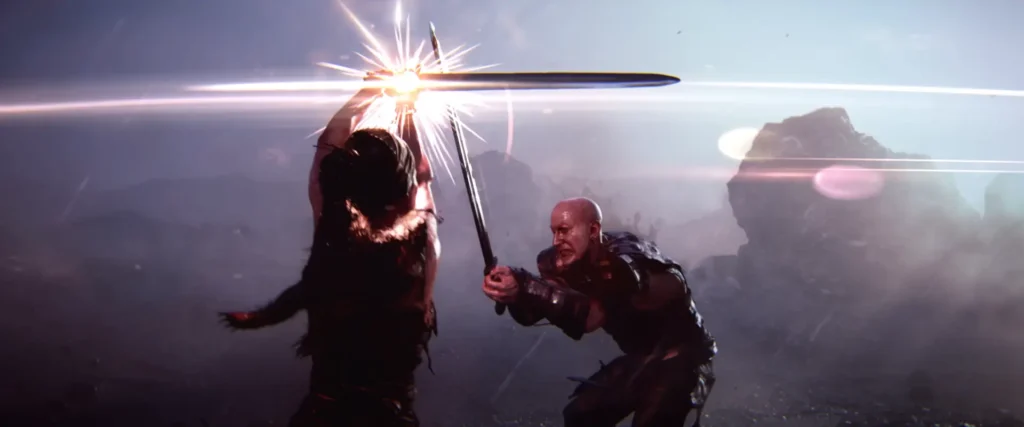
While the formula of Hellblade II remains the same as the first installment, with its usual mix of narrative exploration, puzzles, and combat, there have been a few changes and evolutions. The puzzles have been revised and improved, portals and other illusion masks have disappeared, replaced by stone orbs that can be observed to make elements of the scenery appear/disappear. There are also passages where you have to be clever to pass the flame of a torch to light others.
Classic yes, but the important thing to remember is that the time it takes to open a door blocked by glyphs or to solve a puzzle is shorter than it was in the first game. As a result, the pace of the adventure becomes more intense, especially as the staging takes a giant leap forward, allowing for some welcome breaks during travel. There’s plenty to discover!
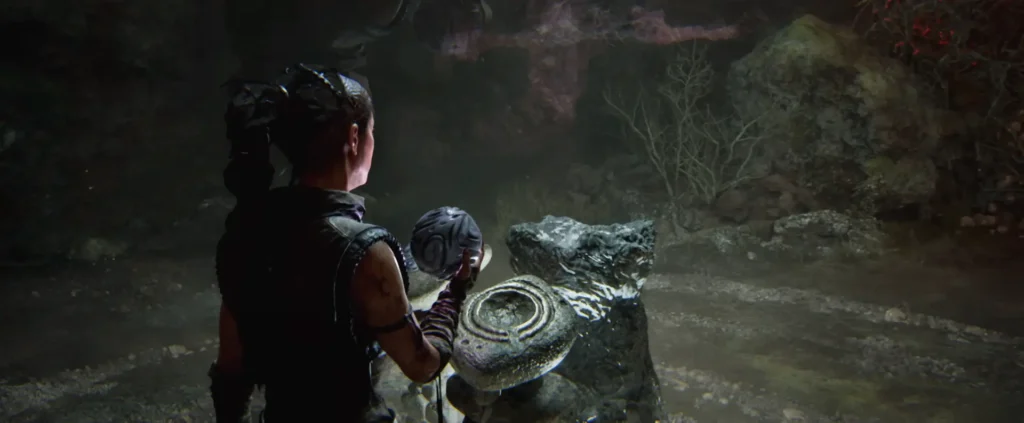
The most remarkable changes are apparent in combat. In Hellblade: Senua’s Sacrifice, battles tended to drag on and be a bit messy, but this sequel makes them more impressive and cinematic than ever. Basically, you still have to perform light/heavy attacks, parry and dodge wisely until you fill up your fury gauge, then inflict massive damage on different types of enemy. Yet in terms of execution, fights are now genuinely brutal and exciting.
You’ve just sliced open an enemy’s belly with your blade? Another one pops up from behind and hangs on to you, before others arrive in a sort of vast dance of death. True, the confrontations are still 1v1, but the opponents follow each other as if everything had been recorded in a single take in a motion capture studio. In short, the duels look like they’ve been choreographed carefully in a real action movie. It’s clear, sharp, and absolutely stunning.
Dynamic Difficulty
Numerous accessibility options are available in the settings. In addition to the 3 classic difficulty levels (easy, medium, hard), there’s a so-called “dynamic” option that makes battles easier or more complicated, depending on the player’s performance.
Since the game never wastes time explaining its systems, it’s up to the player to understand what’s possible and what’s not. It’s up to him to discover that he doesn’t become more powerful as the story proceeds, and that there are no skill trees or special mechanics to enhance his power. Hellblade II is all about sensations, and doesn’t burden itself with any features it considers unnecessary, but that would have given it greater depth.
In a genre that has evolved considerably in recent years, the position of Senua’s Saga is inevitably risky. 100% linear in an era where the general audience is more interested in the open world, and with simple gameplay and no skills to improve while RPG-ization – sometimes to excess – is everywhere, Senua’s Saga takes the risk of relying on what it believes is most important to tell its story.
Conclusion
Senua’s Saga: Hellblade II boasts mind-blowing visuals that push the boundaries of next-generation graphics. While the narrative remains the central focus, guiding players along a predetermined path, the combat encounters have been significantly intensified. Despite offering a more streamlined experience compared to its predecessor, Hellblade II delivers a powerful narrative punch. If you have Game Pass, you should definitely play it!


